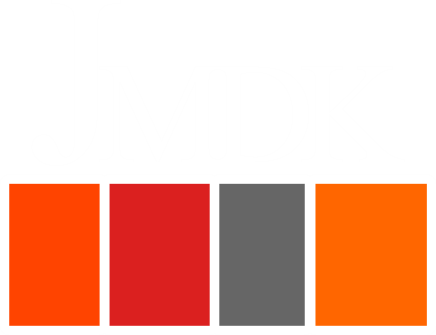Peranan Orientasi Pasar dalam Hubungan Kinerja Perusahaan pada Industri Manufaktur di Solo Raya
DOI:
https://doi.org/10.26905/jmdk.v8i2.4109Keywords:
Financial Performance, Marketing Performance, Proactive Market Orientation, Responsive Market OrientationAbstract
This study aims to provide additional benefits to the literature on the role of market orientation on the performance relationship of manufacturing industrial companies in Solo Raya. This type of research is a causality study with a sample size of 100 respondents, which is obtained from 5 times the number of parameters (20). The research uses path analysis which has a direct or indirect effect. The results of this study indicate: 1) responsive market orientation has a significant positive effect on marketing performance, 2) proactive market orientation has a significant positive effect on marketing performance, 3) responsive market orientation has a significant positive effect on financial performance, 4) Complaint handling has no significant negative effect on financial performance, 5) Marketing performance has a significant positive effect on financial performance. The result of the direct effect of responsive market orientation on financial performance is smaller than the indirect effect. The direct effect of proactive market orientation on financial performance is smaller than the indirect effect. It shows  that all are effective through direct channels without going through the mediating variable.
https://doi.org/10.26905/jmdk.v8i2.4109
Downloads
References
Atuahene-Gima, K., Slater, S.F. & Olson, E.M. (2005). The contingent value of responsive and proactive market orientations for new product program performance. Journal of Product Innovation Management, 22 (6), 464–482.
Augusto, M. & Coelho, F. (2007), “Market orientation and new-to-the-world products: exploring the moderating effects of innovativeness, competitive strength, and environmental forcesâ€, Industrial Marketing Management, 38, 94–108.
Baker, W. & Sinkula, J. M. (2007). Does market orientation facilitate balanced innovation programs? An organizational learning perspective. Journal of Product Innovation Management, 24 (4), 316–334.
Bodlaj, Mateja. 2010. The impact of a responsive and proactive market orientation on innovation and business performance. Economic and business review,12(4),241–261
Cano, C.R., Carrillat, F.A. & Jaramillo, F. (2004). A meta-analysis of the relationship between market orientation and business performance: evidence from five continents. International Journal of Research in Marketing, 21 (2), 179-200.
Damanpour, F., 1991. Organizational innovation: a meta-analysis of effects of determinants and moderators. Academy of Management Journal 34 (3), 555-590.
Deshpande, R. & Farley, J.U. (2004). Organizational culture, market orientation, innovativeness, and firm performance: an international research odyssey. International Journal of Research in Marketing, 21 (1), 3-22.
Ellis, P. D. (2006). Market orientation and performance: a meta-analysis and cross-national comparisons. Journal of Management Studies, 43 (5), 1089–1107.
Griffin, A. & Hauser, J. R. (1996). Integrating R&D and marketing: a review and analysis of the literature. Journal of Product Innovation Management, 13 (3), 191–215.
Grinstein, A. (2008). The effect of market orientation and its components on innovation consequences: a meta-analysis. Journal of the Academy of Marketing Science, 36 (2), 166–173.
Gruca, T. S. & Rego, L. L. (2005). Customer satisfaction, cash flow, and shareholder value. Journal of Marketing, 69 (3), 115–130.
Han, J.K., Kim, N., Srivastava, R.K., 1998. Market orientation and organisational performance: is innovation the missing link? Journal of Marketing 62 (4), 30–45.
Homburg, C. & Pflesser, C. (2000). A multiple-layer model of market-oriented organizational culture: measurement issues and performance outcomes. Journal of Marketing Research, 37(4), 449–462.
Hurley, R. F. & Hult, G. T. M. (1998). Innovation, market orientation, and organizational learning: an integration and empirical examination. Journal of Marketing, 62 (3), 42–54.
Ittner, C.D., Larcker, D.F., 1997. The performance effects of process management techniques. Management Science 43, 522–534.
Johannessen, J., Olsen, B., Lumpkin, G.T., 2001. Innovation as newness: what is new, how new, and new to whom?. European Journal of Innovation Management 4 (1), 20–31.
Knott, A.M., 2001. The dynamic value of hierarchy. Management Science, 47, 430–448.
Kohli, A.K., Jaworski, B. J.& Kumar, A. (1990). MARKOR: a measure of market orientation. Journal of Marketing Research, 30 (4), 467-477.
Lawless, M.W., Anderson, P.C., (1996). Generational technological change: effects of innovation and local rivalry on performance. Academy of Management Journa,l 39, 1185-1217.
Ledwith, A. & O’Dwyer, M. (2008). Product launch, product advantage and market orientation in SMEs. Journal of Small Business and Enterprise Development, 15 (1), 96-110.
Li, H., Atuagene-Gima, K., 2001. Product innovation strategy and the performance of new technology ventures in China. Academy of Management Journal 44 (6), 1123-1134.
Li, L., 2000. An analysis of sources of competitiveness and performance of Chinese manufacturers. International Journal of Operations and Production Management, 20 (3-4), 299-315.
Lin, C.Y., Chen, M.Y. (2007). Does innovation lead to performance? An empirical study of SMEs in Taiwan. Management Research News, 30 (2), 115-132.
Marcus, A.A., (1988). Responses to externally induced innovation: Their effects on organizational performance. Strategic Management Journal, 9, 387-402.
Matsuno, K., Mentzer, J. T. & Özsomer, A. (2002). The effects of entrepreneurial proclivity and market orientation on business performance. Journal of Marketing, 66 (3), 18-32.
Mavondo, F. and Farrell, M. (2003), “Cultural orientation: its relationship with market orientation, innovation and organizational performanceâ€, Management Decision, 41(3), 241–9.
Morgan, N. A., Clark, B. H. & Gooner, R. (2002). Marketing productivity, marketing audits, and systems for marketing performance assessment: integrating multiple perspectives. Journal of Business Research, 55 (5), 363-375.
Narver, J.C., Slater, S.F. & MacLachlan, D.L. (2004). Responsive and proactive market orientation and new-product success. Journal of Product Innovation Management, 21 (5), 334–347.
Olson, C.A., Schwab, A., (2000). The performance effects of human resource practices: the case of interclub networks in professional baseball, 1991-1940. Industrial Relations, 39, 553-577.
Pelham, A.M., (1997). Mediating influences on the relationship between market orientation and profitability in small industrial firms. Journal of Marketing Theory and Practice. 5 (3), 55–76.
Ravichandran, T., (2000). Swiftness and intensity of administrative innovation adoption: An empirical study of TQM in information systems. Decision Sciences 31 (3), 691-724.
Sandvik, I. L. & Sandvik, K. (2003). The impact of market orientation on product innovativeness and business performance. International Journal of Research in Marketing, 20 (4), 355-376.
Slater, S. F. & Narver, J. C. (1994). Market orientation and the learning organization. Journal of Marketing, 59 (3), 63-74.
Srivastava, R. K., Shervani, T. A. & Fahey, L. (1998). Market-based assets and shareholder value: a framework for analysis. Journal of Marketing, 62 (1), 2-18.
Subramanian A., Nilakanta, S., (1996). Organisational innovativeness: Exploring the relationship between organisational determinants of innovation, types of innovations, and measures of organisational performance. Omega, 24 (6), 631-647.
Vazquez, R., Santos, M. L. & Alvarez, L. I. (2001). Market orientation, innovation and competitive strategies in industrial Firms. Journal of Strategic Marketing, 9 (1), 69-90.
Voola, R. & O’Cass, A. (2010). Implementing competitive strategies: the role of responsive and proactive market orientations. European Journal of Marketing, 44 (1/2), 245-266.
Walker, R.M., (2004). Innovation and organizational performance: Evidence and a research agenda. Advanced Institute of Management Research Working Paper, WP, 2
Wang, E.T.G., Wei, H.-L., (2005). The importance of market orientation, learning orientation, and quality orientation capabilities in TQM: An example from Taiwanese software industry. Total Quality Management, 16 (10), 1161–1177.
Whittington, R., Pettigrew, A., Peck, S., Fenton, E., & Conyon, M., (1999). Change and complementarities in the new competitive landscape: A European panel study, 1992-1996. Organisation Science, 10, 583-600.
Wren, B. M., Souder, W. E. & Berkowitz, D. (2000). Market orientation and new product development in global industrial firms. Industrial Marketing Management, 29 (6), 601-611.
Zhou, K.Z. (2008), “Innovation, imitation, and new product performance: the case of Chinaâ€, Industrial Marketing Management, 35(3), 394-402
Downloads
Published
Issue
Section
License
Authors who publish with this journal agree to the following terms:
(1)Â Copyright of the published articles will be transferred to the journal as the publisher of the manuscripts. Therefore, the author confirms that the copyright has been managed by the journal.
(2) Publisher of Jurnal Penelitian is University of Merdeka Malang.
(3) The copyright follows Creative Commons Attribution–ShareAlike License (CC BY SA): This license allows to Share — copy and redistribute the material in any medium or format, Adapt — remix, transform, and build upon the material, for any purpose, even commercially.












